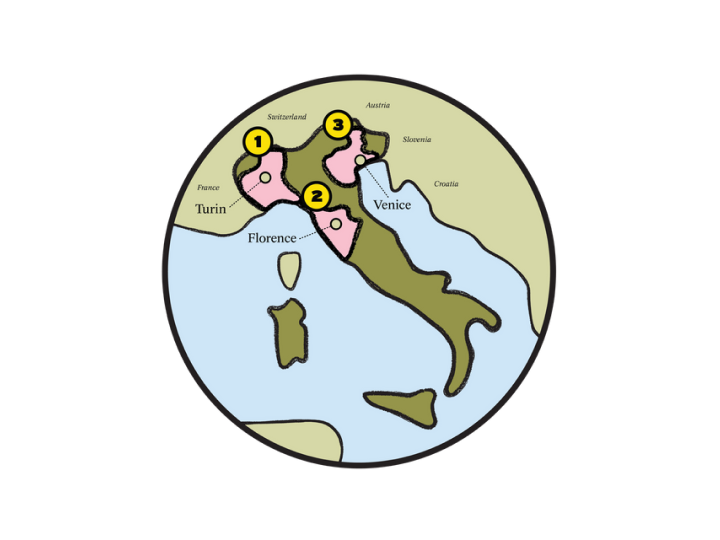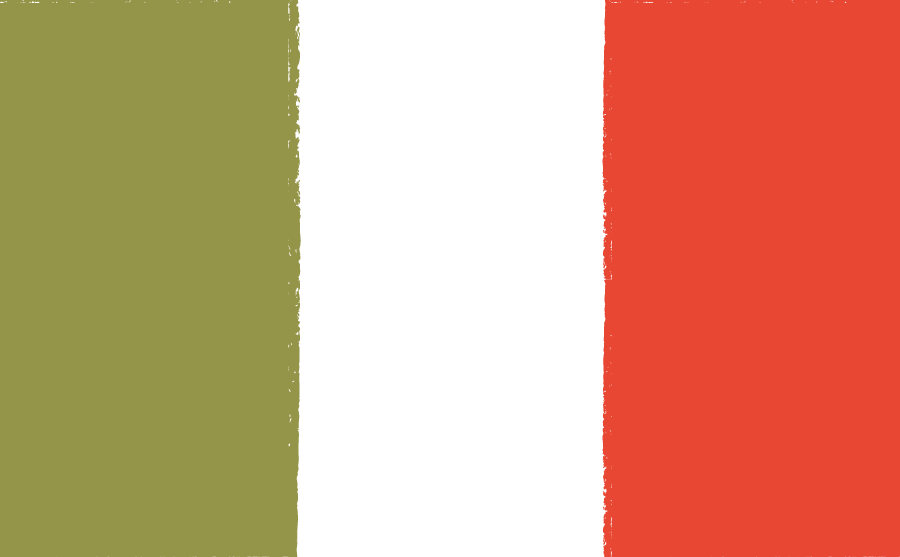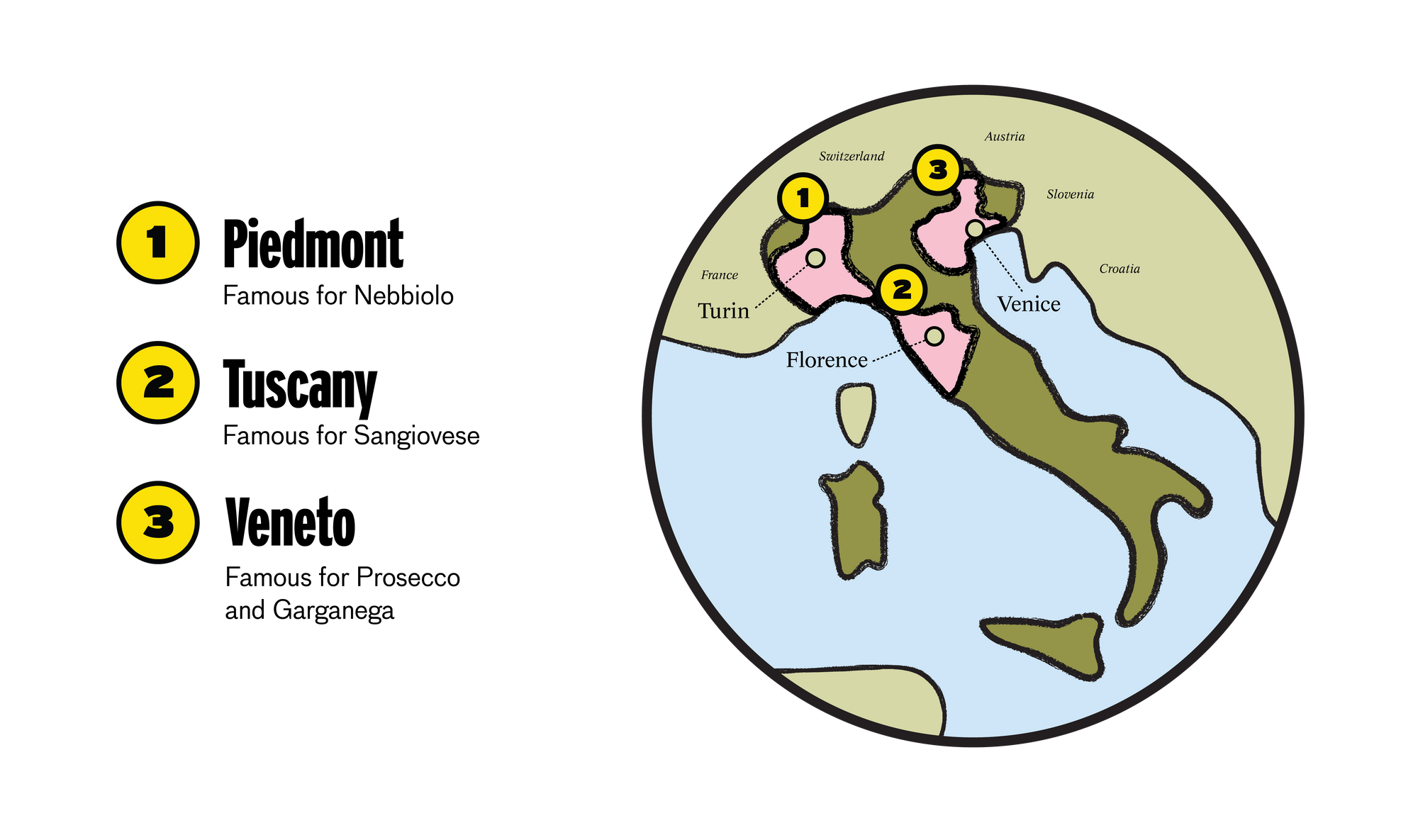

More native varieties than any other country means that Italian wine is always going to be a big part of the world of wine.
History--red
When it comes to the integration of food, wine and culture, there is simply nowhere like Italy. Drawing on over 4000 years of history, from the Etruscans to the Romans to modern-day, the Italian way of life and wine have been inextricably intertwined.

Whilst today Italian wine sits very much toward the pointy of end the quality tree, it wasn't always the way. In the nineteenth century, along with may other European countries, the vine louse phylloxera vastatrix took hold and destroyed many of Italy’s vineyards. Replanted vineyards were often introduced with quantity not quality in mind. Thus Italy became a global source of inexpensive table wines. It wasn't until the 1960s when a series of laws were passed to improve wine quality and labelling that the modern era of winemaking began.
Italy’s wine future is just as bright as its storied past, in part due to the diversity of wines produced. Not only does Italy have more native indigenous varieties than any other country, but each region is distinct from the others. Over its long history, modern Italy evolved from a loose collection of city-states. Today’s twenty wine regions line up with the political borders that grew out of the city-states of the past. Thus each region approaches things a little differently, adhering to their own traditions.
In terms of wine volume, the leading regions are Veneto and Emilia-Romagna in the north and Puglia and Sicily in the south. In terms quality, most would look to Piedmont and Tuscany. Here we find the most number of geographically marked quality zones, named DOC and DOCG in Italy. Wine laws in Italy are very complex however, forcing some of the country's most exciting new wines to be lumped together with simple table wines, due to winemaking and labelling restrictions. In 1992, a new classification called IGT was introduced to allow some flexibility, but this does make things difficult for the consumer when assessing quality! Despite the history, Italian bureaucracy gets in the way...
Main regions--aromatic
Piedmont - the most prestigious Italian region, home to the subregions of Barolo and Barbaresco, where the famous Nebbiolo is grown. Also home to Asti, where Moscato originates. Plus, some of the best truffles and hazelnuts in the world come from Piedmont!
Tuscany - the spiritual home of Sangiovese, whether it be in Chianti or Brunello di Montalcino (both famed subregions). Chianti gave birth to the now infamous fiasco, a round bottle wrapped in straw.
Veneto - the largest producing region in Italy, where you'll find Prosecco as well as the subregion of Soave, where Garganega is grown.

Main grapes--racy
Nebbiolo - a powerful, dry red, incredibly perfumed and capable of long ageing. High tannins and acidity need time to soften, but the wines are wonderful.
Sangiovese - best known in Tuscany but found in many parts of Italy, Sangiovese is a wonderful variety producing zesty reds that don't lack for power.
Garganega - a herbal, juicy white variety that forms the basis of the famous wines of Soave
Fiano - another famous white, best known in the southern region of Campania
Specific wine styles--strawberry
Prosecco - probably Italy's best-known sparkling wine. Franciacorta, a traditional method sparkling from neighbouring Lombardy and commands higher prices and is probably better esteemed, but Prosecco has more international recognition.
Barolo - the most famous region in Italy, in the northwest, in Piedmont. Produces only red wine, made from Nebbiolo. Very firm tannins make for dry, powerful wines that are both floral and complex. Can age for decades.
Dry, inoffensive whites - Garganega, Trebbiano and Pinot Grigio can make stunning wines, but when grown in the wrong places or simply harvested at very high volumes, the wines can be simple and bland. Italy does a roaring trade in both the former and the latter.
Do you know your wine personality? If your answer is no, take our quiz to find out which wines to pick up next and build your box!
Build my box





